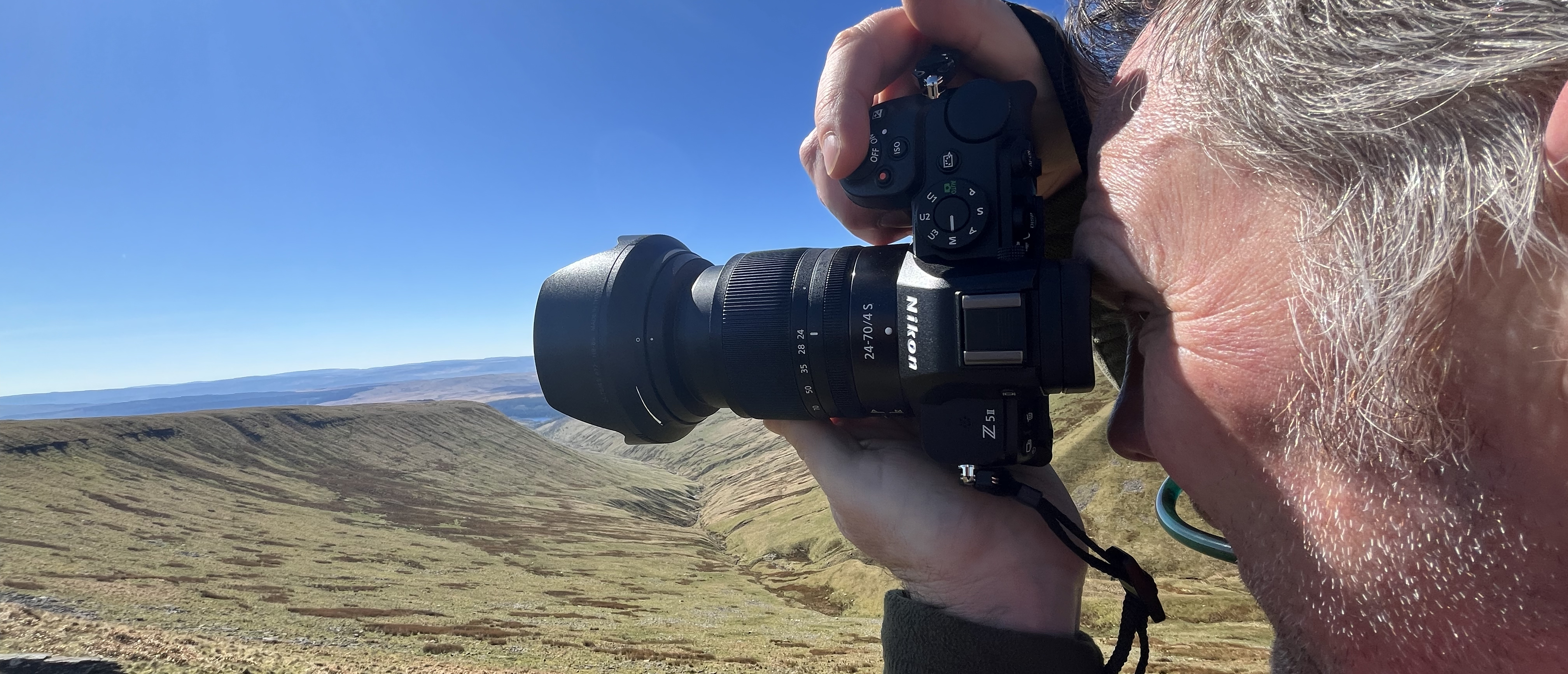Fujifilm X-T50 vs X-T30 II
The Fujifilm X-T50 looks like an easy win over the ‘old’ X-T30 II, but does our Fujifilm X-T50 vs X-T30 II comparison agree?
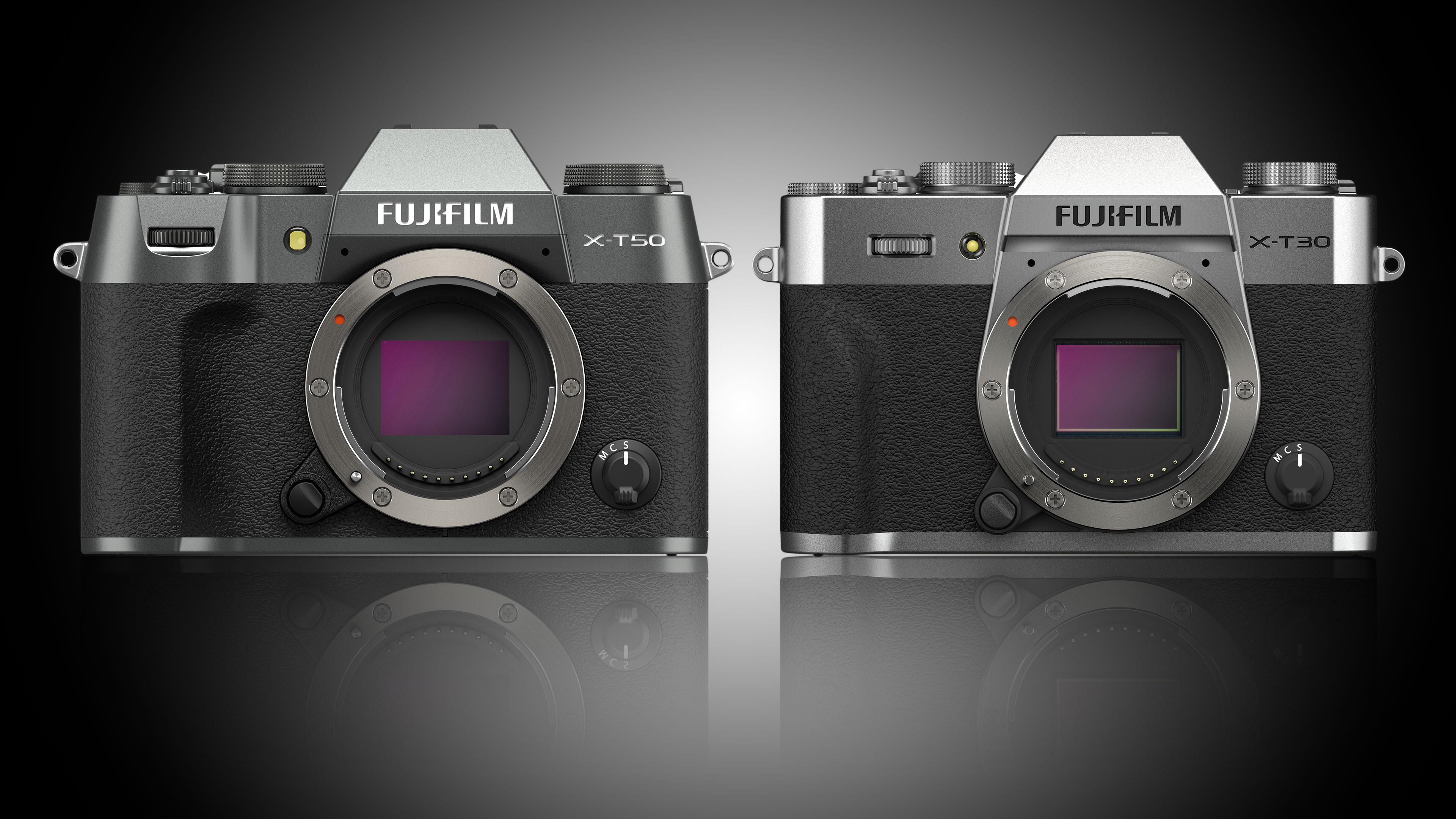
The Fujifilm X-T50 is a long-awaited update to the likable X-T30 and its subsequent X-T30 II sequel, and it brings three huge advances that it’s hard to ignore: the news 40MP sensor, in-body stabilization and a dedicated external film simulation dial.
There’s no competition, right? But let’s slow down for a moment. At the time of writing, the ‘old’ X-T30 II is still on sale, it uses the same highly regarded 26.1MP X-Trans CMOS 4 sensor found in the current X-S20 model, it has the same compact body shape as the X-T50 and it costs a LOT less to buy new.
The fact is, if you’re a fan of the body shape but can live without in-body stabilization, the X-T30 II offers spectacular value for money. It’s even a competent 4K video camera, so content creators and retro fans can get the look and the tools they want for not a lot of money.
The X-T30 II is not an old camera. It’s tech and capabilities are still pretty up to date, and both the X-T30 II and X-T50 can be considered amongst the best Fujifilm cameras right now. The X-T50 has IBIS and video resolutions up to 6K, so it has the potential to be one of the best cameras for vlogging and even one of the best hybrid cameras for content creation, while the X-T30 II has a price and a size that makes it one of the best travel cameras to buy today. It’s perhaps even one of the best cameras for beginners, because although it’s smothered in dials, it does have easy auto mode operation, and a price that few rivals can match.
So while the X-T50 is clearly technically superior in practically every respect, let’s not rule out the Fujifilm X-T30 II just yet…
Fujifilm X-T50 vs X-T30 II in 2024
Why you can trust Digital Camera World
1. Sensor
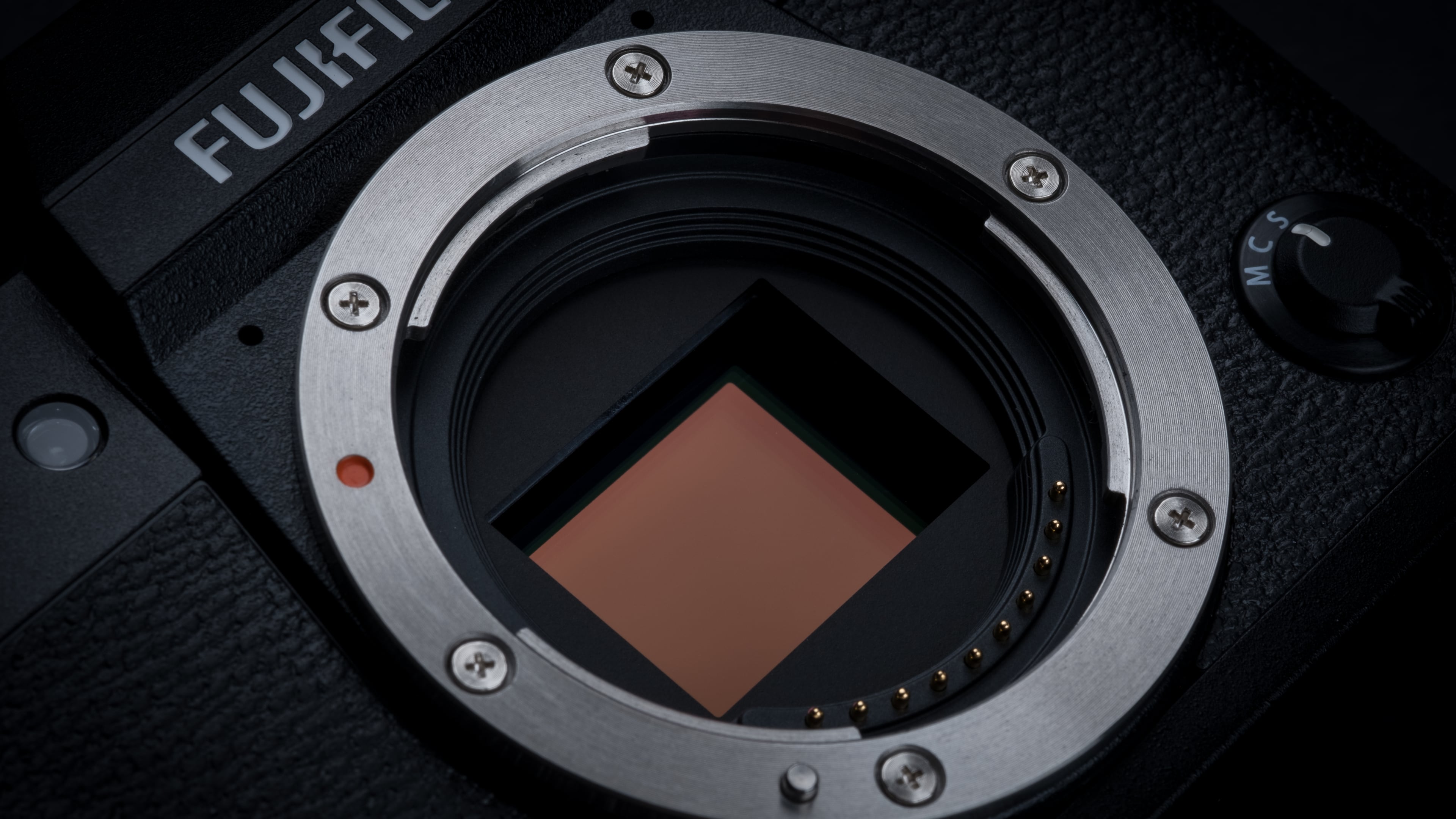
• Fujifilm X-T50: 40.2MP APS-C X-Trans CMOS 5 HR, X Processor 5
• Fujifilm X-T30 II: 26.1MP APS-C X-Trans CMOS 4, X Processor 4
The X-T50 brings a huge hike in resolution, from 26MP to 40MP. That sounds a lot, but as a proportion it’s not huge, with an increase of around 24% in the image width and height in pixels. Worth having, perhaps, but the 26MP of the X-T30 II might be plenty for many photographers.
The new X-Trans CMOS 5 HR sensor doesn’t bring any obvious decline in high-ISO image quality, which is an impressive achievement, but it does exaggerate the limitations and weaknesses of lenses. Zooms that might have looked decent enough on the ‘old’ 26MP X-Trans sensor can suddenly look very weak on the new one.
2. Autofocus
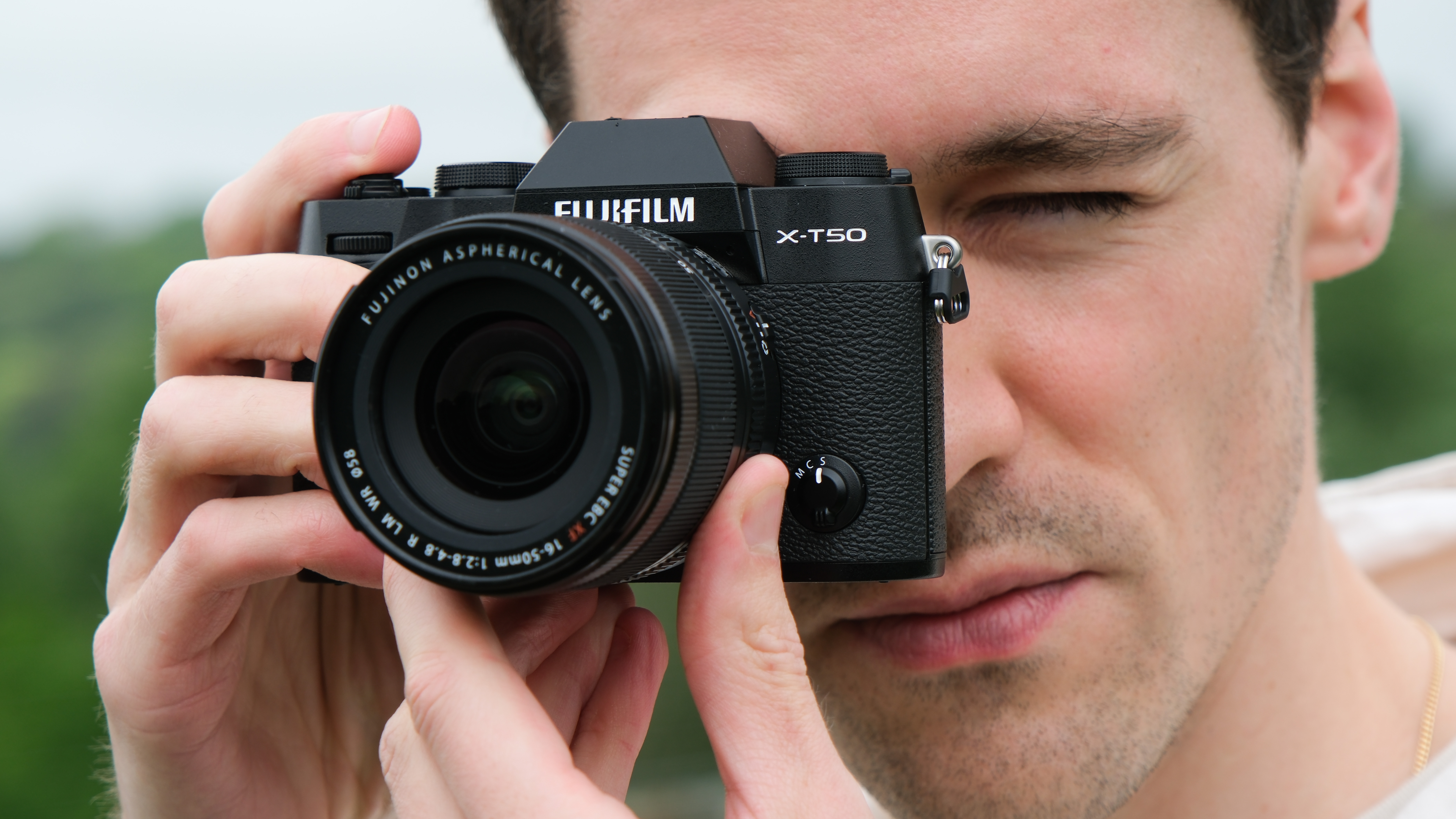
• Fujifilm X-T50: Hybrid AF with subject detection (animals, birds, cars, motorcycles, bicycles, airplanes, trains, insects, and drones), 13x9/25x17 areas
• Fujifilm X-T30 II: Hybrid AF with face and eye detect, 13x9/25x17 areas
On paper, the X-T30 II’s AF system has all the AF points, zones and configurability of the X-T50’s. However, Fujifilm has made great advances in its focus technologies in its latest cameras, both with new subject detection capabilities and improved AF tracking performance. You’re likely to find the X-T50 at lot better at finding and sticking to its subjects when tracking them.
3. Video
• Fujifilm X-T50: 6.2K 30p, 4K/C4K 30p 4:2:2 10-bit, 4K/C4K 60p, F-Log/F-Log2, multiple crop factors depending on settings
• Fujifilm X-T5: 4K 30p oversampled from 6K, FHD 240fps, F-Log
The X-T50 is a pretty clear winner for more advanced video capture, thanks to its higher maximum 6K resolution, the addition of Fujifilm’s F-Log2 mode and its choice of capture options. However, that’s for higher-end users. If you just want 4K 30p video, the X-T30 II does a great job, with video oversampled from 6K capture. It does actually have a sensor resolution better suited to video capture, though the X-T50 is still the more advanced video device – and is aided by its more capable subject detection and AF tracking.
Neither camera is exactly purpose-made for vlogging, though, and more advanced filmmakers will be more likely to consider the Fujifilm X-H2S instead, or perhaps the X-S20 as a cheaper option..
4. Stabilization
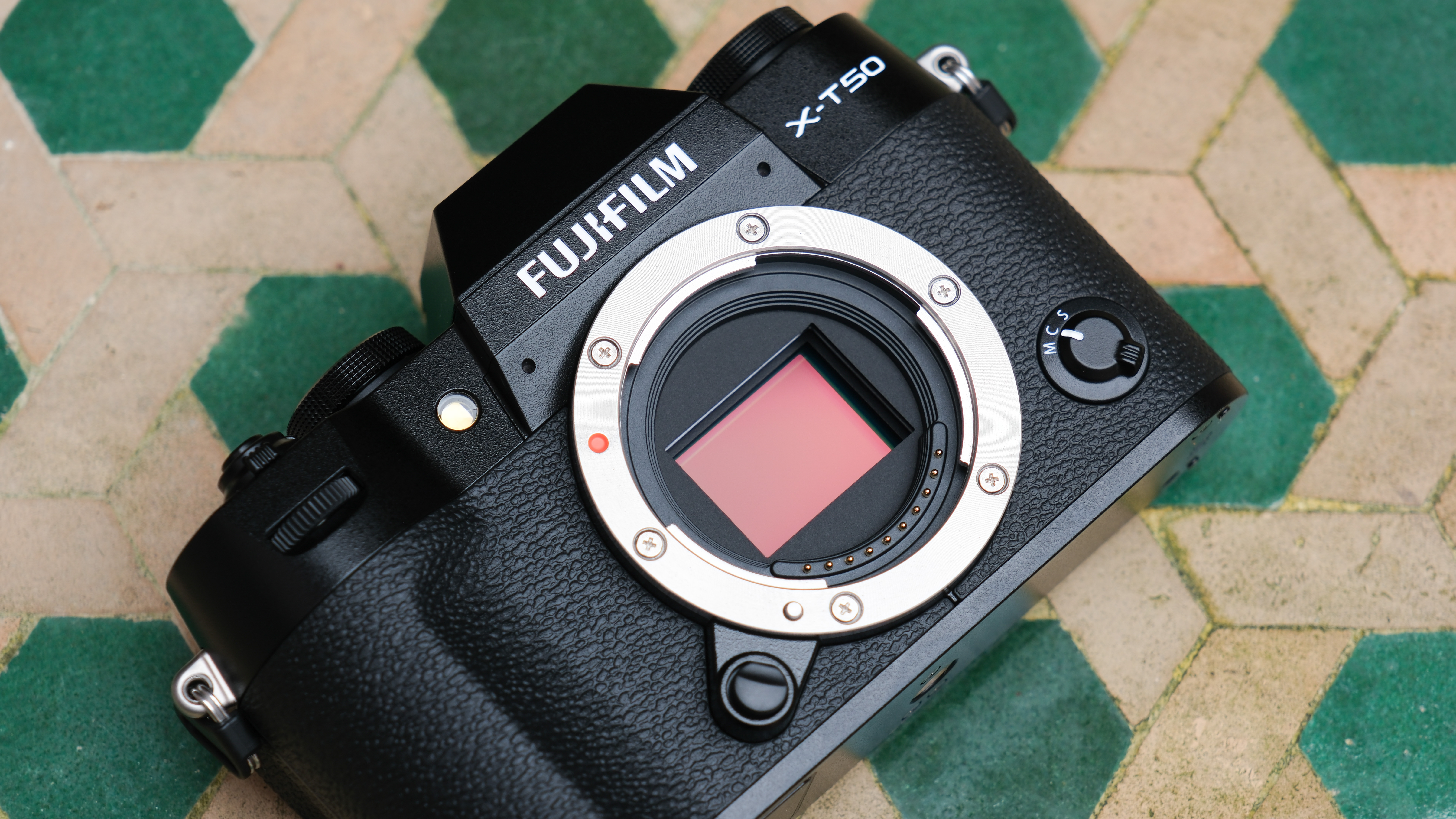
• Fujifilm X-T50: 5-axis IBIS, 7 stops compensation
• Fujifilm X-T30 II: N/A (in-lens only)
The inclusion of IBIS is a huge step forward for the X-T50 over the X-T30 II, both for stills photography and video. For many, the lack of IBIS in the X-T30 II could have been a deal-breaker. With the X-T50 you can be sure of sharper shots at ‘marginal’ shutter speeds, and you will have a much more stable platform for filming.
5. Continuous shooting
• Fujifilm X-T50: 5fps mechanical (1000+ raw or JPEG), up to 20fps electronic shutter (with 1.29x crop) (168 JPEG, 66 compressed raw)
• Fujifilm X-T30 II: 8fps mechanical (105 JPEG, 23 raw), 30fps electronic (1.25x crop) (29 JPEG, 17 raw)
It’s good and bad news with the X-T50’s continuous shooting capabilities. The X-T30 II can actually shoot faster, thanks to its lower resolution, but while the X-T50 can only manage 5fps with its mechanical shutter, its buffer can keep this up almost indefinitely. The X-T30 II may have higher burst speeds in both mechanical and electronic shutter modes, but it can’t keep up those speeds for very long at all.
6. Size and weight
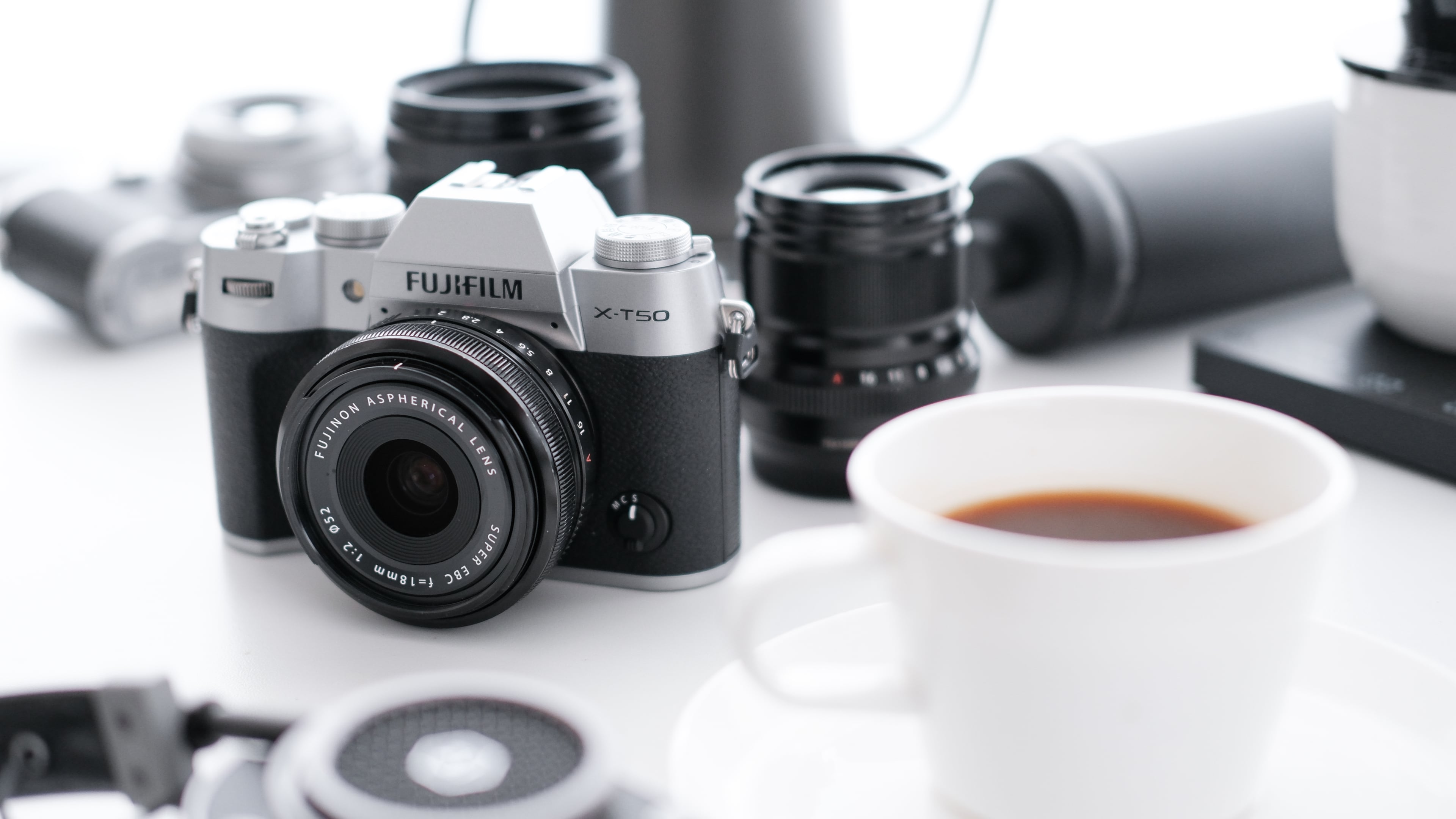
• Fujifilm X-T50: 123.8 x 84 x 48.8mm, 438g body only
• Fujifilm X-T30 II: 118.4 x 82.8 x 46.8mm, 378g body only
The X-T50 looks like a very compact camera, especially in our Fujifilm X-T50 vs X-T5 comparison, but in fact the older X-T30 II is smaller and lighter still. The differences are fairly small, though, and many might feel that the X-T50 is plenty small enough already. It does have more rounded corners, most noticeably on the top-plate, and it does look a little more stylish and approachable than the brick-shaped X-T30 II.
7. Film simulations

• Fujifilm X-T50: 20, set via a dedicated dial on the top plate
• Fujifilm X-T30 II: 18, set via the menus
Fujifilm’s steadily increasing range of Film Simulations is one of the brand’s biggest selling points, and with the ability to customize these with grain, clarity, color ‘chrome’ effect and more, it’s sparked a whole online community of Fujifilm recipe creators.
The X-T50 adds two more Film Simulations to the already impressive list on the X-T30 II – Nostalgic Neg and Reala ACE. The addition of two new simulations is obviously of interest, but the big shift with the X-T50 is to move these to a dedicated dial on the top. If you love using these Film Simulations, you will love the X-T50’s new dial. It has dedicated settings for the most common simulations and custom settings for any that you want to add.
8. Exposure dials
• Fujifilm X-T50: Shutter speed, EV compensation, aperture (lens dependent)
• Fujifilm X-T30 II: Shutter speed, EV compensation, aperture (lens dependent)
Both these cameras have shutter speed dials on the top and aperture rings (on the lenses that have them), but you have to set the third point of the exposure triangle – ISO – via the menus/function buttons. If you want a dedicated ISO dial, you need to look at the Fujifilm X-T5 instead.
The drive mode dial on the X-T30 II has been replaced by the Film Simulation dial on the X-T50. This seems a no-brainer, and a much better choice of external controls for this camera.
9. Displays
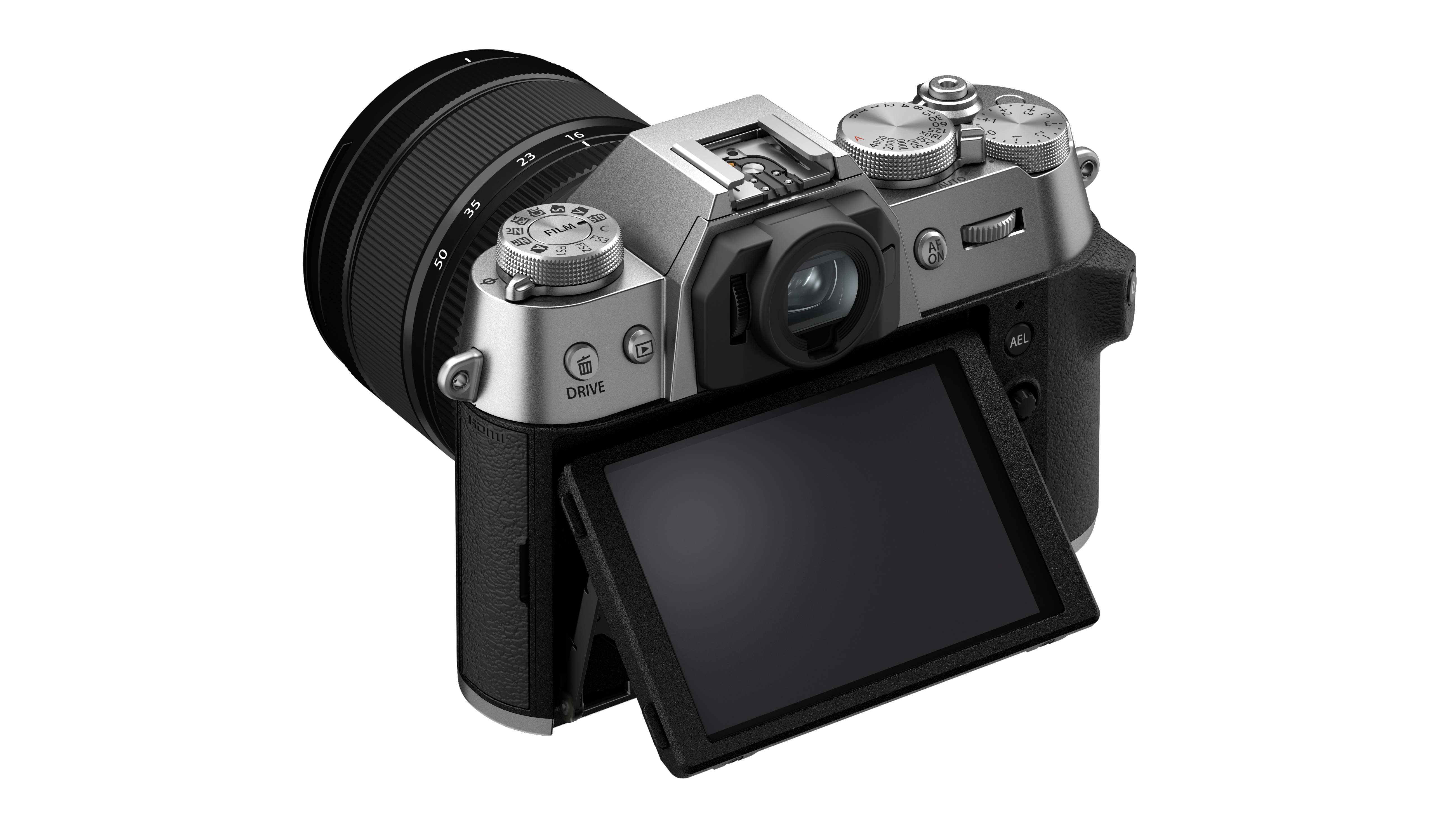
• Fujifilm X-T50: EVF 2.36m dot OLED, 100% coverage, 0.62x magnification, rear screen 3-inch 1.84m dot tilting touchscreen
• Fujifilm X-T30 II: EVF 2.36m dot OLED, 100% coverage, 0.62x magnification, rear screen 3-inch 1.62m dot tilting touchscreen
The Fujifilm X-T50 has stuck with the same EVF as the X-T30 II before it. The 2.36m dot resolution is adequate but not exceptional and the 0.62x magnification is pretty modest too. The X-T50 does boast a modest improvement around the back, though, with a 1.84m dot tilting touchscreen rather than the 1.62m dot screen on the X-T30 II – though both rear screens are more than good enough.
10. Storage
• Fujifilm X-T50: 1x SD UHS II
• Fujifilm X-T30 II: x SD UHS I
Both cameras have a single SD card slot right next to the battery compartment in the base of the camera. The only difference is that the X-T50 can exploit the extra speed of UHS II cards, which may help with video and burst modes.
11. Power
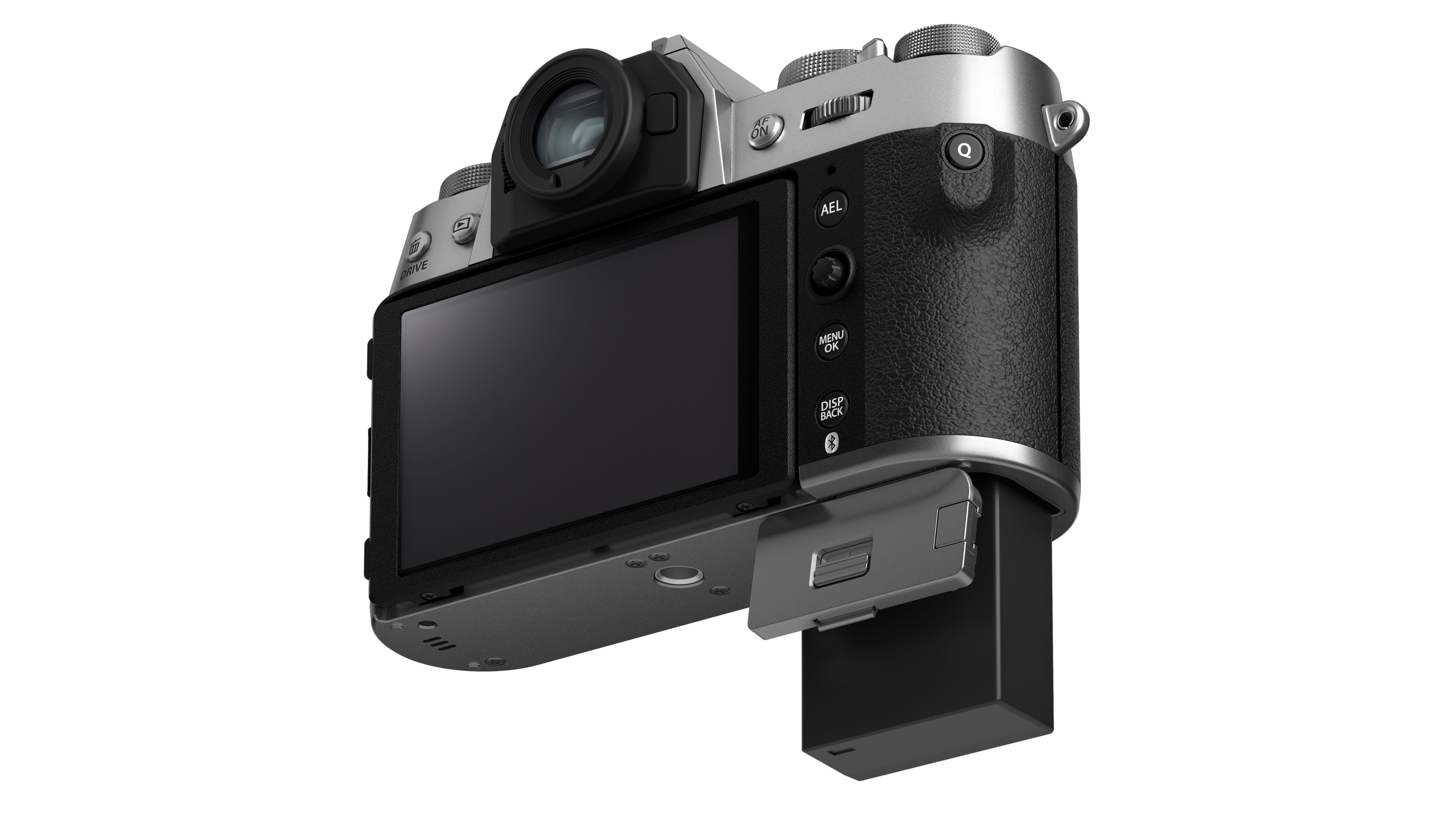
• Fujifilm X-T50: NP-W126S, 305 shots
• Fujifilm X-T30 II: NP-W126S, 390 shots
These cameras use the same NP-W126S lithium ion battery, but the older X-T30 II can squeeze rather more shots out of a single charge. This is probably due to the higher resolution and more powerful X Processor 5 in the X-T50. The difference in battery life hardly seems enough to make you choose the X-T30 II over the X-T50, though, and with both cameras you would be well advised to take a spare (or two) if you’re out for a whole day’s shooting.
Fujifilm X-T50 vs X-T5: conclusions
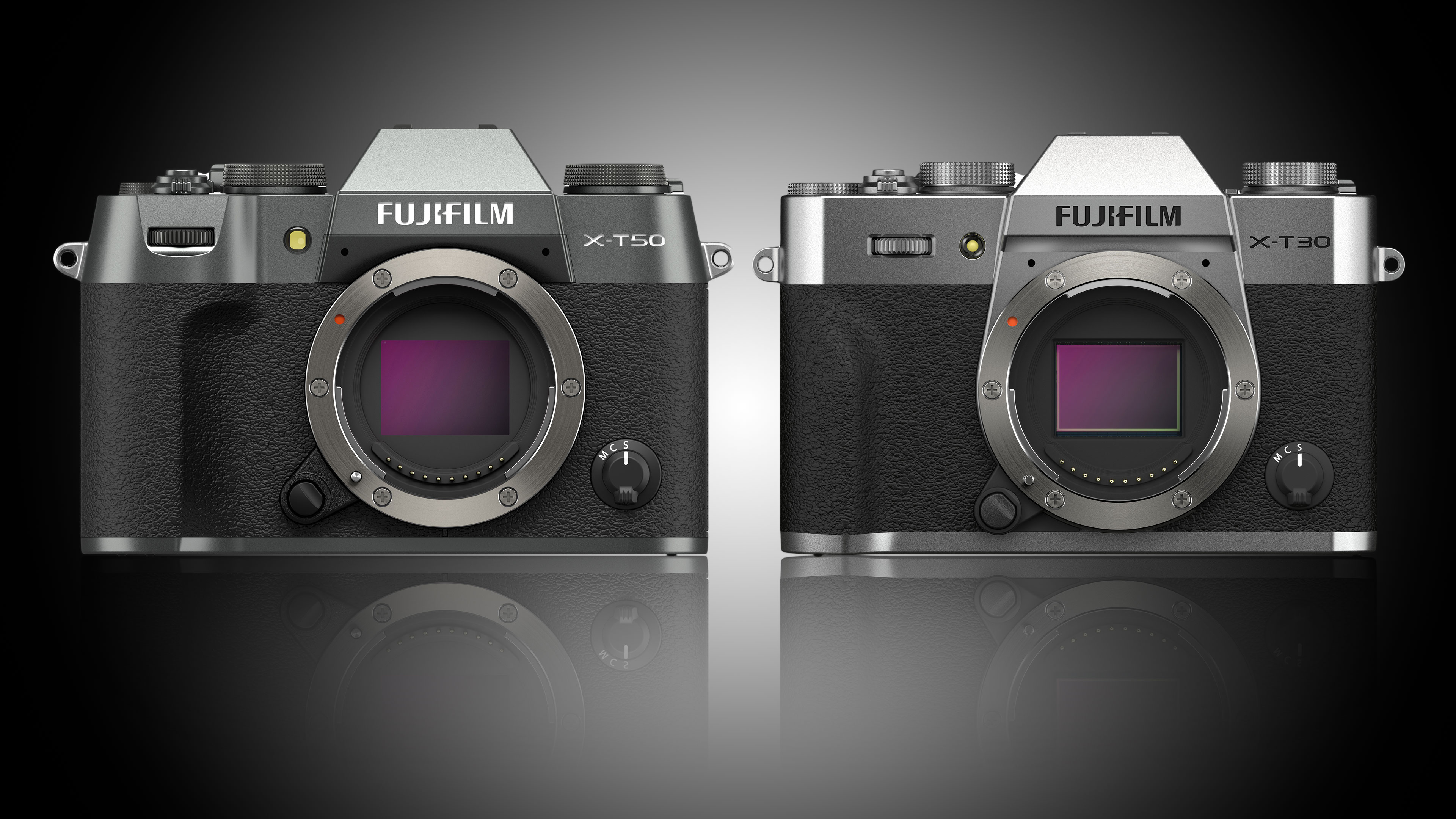
• Fujifilm X-T50: $1,399 / £1,299
• Fujifilm X-T30 II: $899 / £799
The Fujifilm X-T50 certainly offers some major technical advances over the X-T30 II. Amongst these are its higher 40-megapixel resolution, its 7-stop in-body stabilization, external Film Simulation dial and 6K video capability. Less obvious but just as important are the advances Fujifilm has made in AF subject recognition and tracking. This is the camera to get if you want the latest tech in content creation and a step up in potential image quality.
But while it seems to have been around for ages, the X-T30 II is itself a very modern, competent camera. It offers the same retro styling and high-quality compact build and can capture 26MP stills and 4K video too – it’s perfectly competitive with current rivals from other brands while offering rather more for the money.
We should talk about that 26MP sensor, too. The 40MP X-T50 may put it in the shade somewhat, but 26MP is still the third highest resolution amongst APS-C cameras and can capture very sharp, detailed images. What’s more, it’s rather more forgiving of average-quality lenses than the X-T50. If you buy the X-T50, you might find yourself investing in newer/better lenses, too.
The fact is, although the X-T30 II is outclassed by the X-T50 technically, at current prices it’s exceptional value compared to other brands and to the X-T50 itself. At some point, Fujifilm will no doubt withdraw it from sale, so if you’re interested, don’t wait too long!
Get the Digital Camera World Newsletter
The best camera deals, reviews, product advice, and unmissable photography news, direct to your inbox!

Rod is an independent photography journalist and editor, and a long-standing Digital Camera World contributor, having previously worked as DCW's Group Reviews editor. Before that he has been technique editor on N-Photo, Head of Testing for the photography division and Camera Channel editor on TechRadar, as well as contributing to many other publications. He has been writing about photography technique, photo editing and digital cameras since they first appeared, and before that began his career writing about film photography. He has used and reviewed practically every interchangeable lens camera launched in the past 20 years, from entry-level DSLRs to medium format cameras, together with lenses, tripods, gimbals, light meters, camera bags and more. Rod has his own camera gear blog at fotovolo.com but also writes about photo-editing applications and techniques at lifeafterphotoshop.com
